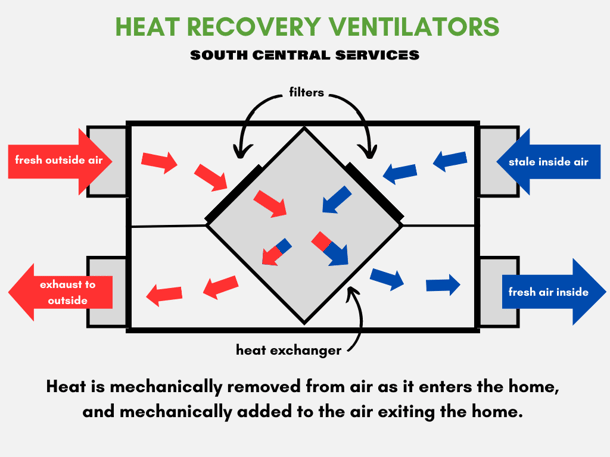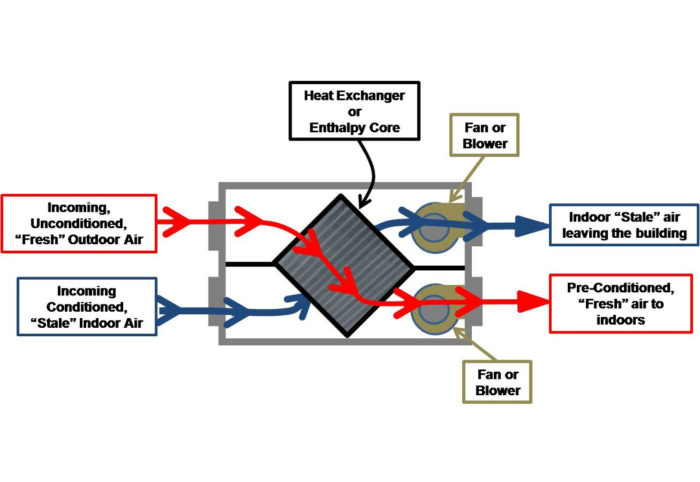Money-Saving Potential of HRV for Homeowners
Wiki Article
The All-Inclusive Guide to the Uses of Heat Recovery Ventilation in Modern Structures
Heat Recovery Ventilation (HRV) systems stand for a significant advancement in constructing innovation (HRV Heat Recovery Ventilation). They offer an approach for trading stale interior air with fresh outdoor air while decreasing power loss. This approach not only boosts interior air top quality however also adds to energy performance in both domestic and commercial buildings. Understanding the numerous applications and advantages of HRV can reveal its important role in contemporary layout and sustainability efforts. The ramifications of this innovation are worth discovering furtherRecognizing Heat Recovery Ventilation Solutions

Several contemporary structures focus on power efficiency, comprehending warm recuperation air flow (HRV) systems is vital for optimizing indoor air high quality and minimizing power intake. HRV systems work by transferring heat from stale indoor air to incoming fresh air, efficiently preserving comfortable indoor temperatures while minimizing energy loss. These systems contain a warmth exchanger, fans, and ductwork that assist in the flow of air. During wintertime, HRV systems capture and recycle warmth from the outbound air, while in summer season, they can aid cool down incoming air. By continuously trading air, HRV systems additionally lower humidity and the concentration of interior toxins. Appropriate installation and maintenance of HRV systems are important for their efficiency and effectiveness in boosting general building performance and convenience.
Benefits of Heat Recovery Ventilation
Heat recovery ventilation systems use various benefits that enhance both power performance and indoor air top quality in contemporary structures. By capturing and recycling energy from exhaust air, these systems significantly lower heating & cooling expenses, causing reduced energy usage. Furthermore, they maintain a steady circulation of fresh outside air, minimizing the danger of interior air contaminants and allergens. This continuous exchange assists regulate humidity degrees, stopping mold and mildew development and making sure a much healthier living environment. Additionally, HRV systems add to sustainability objectives by decreasing general carbon impacts. Their capability to enhance ventilation without compromising thermal comfort makes them a valuable addition to contemporary building layout, promoting both financial and ecological advantages.Applications of HRV in Residential Structures
As property owners significantly prioritize energy performance and indoor air top quality, the applications of heat healing air flow (HRV) systems in domestic structures have actually become much more widespread. HRV systems are specifically useful in securely sealed homes, where keeping fresh air flow is vital for avoiding moisture buildup and indoor pollutants. They successfully move warmth from outbound stale air to inbound fresh air, decreasing energy expenses related to cooling and heating. In addition, HRVs can boost more info here convenience degrees by managing moisture and temperature. They are likewise versatile for numerous household designs, including single-family homes and multi-unit buildings. In general, integrating HRV systems supports sustainable living methods while making certain a much healthier interior setting for passengers.HRV in Business and Commercial Setups
In industrial and commercial settings, the application of warm recuperation air flow (HRV) systems has ended up being progressively crucial for optimizing energy effectiveness and preserving air top quality. These systems successfully move warmth from exhaust air to inbound fresh air, minimizing the demand for extra home heating or air conditioning. This not only lowers power costs but also adds to sustainability efforts. Industries such as manufacturing, warehousing, and office complex benefit considerably from HRV systems, as they aid manage temperature level and moisture levels, making certain a comfortable and effective environment. HRV systems help in eliminating contaminants and excess moisture, improving indoor air top quality. As guidelines around air top quality end up being stricter, the fostering of HRV innovation is likely to see here expand, making it an essential element of contemporary industrial and industrial framework.Future Patterns in Heat Recovery Ventilation Modern Technology

Frequently Asked Questions
Exactly How Does Heat Recovery Ventilation Effect Indoor Air Top Quality?
Heat recovery ventilation greatly enhances indoor air high quality by continuously exchanging stale interior air with discover this info here fresh outdoor air while recovering energy. This process reduces pollutants, preserves perfect humidity levels, and ensures a much healthier atmosphere for occupants.Can HRV Solutions Be Set Up in Existing Structures?
HRV systems can certainly be set up in existing structures. Retrofitting may require modifications to ductwork and ventilation formats, yet it considerably improves power efficiency and interior air quality, making it a feasible option for older structures.What Maintenance Is Required for HRV Systems?

Exist Particular Climates Where HRV Is Much More Efficient?
Heat recovery ventilation systems are especially reliable in climates with significant temperature differences between seasons. These systems enhance energy efficiency by recovering heat from exhaust air, making them perfect for both chilly and moderately warm environments.How Do HRV Equipments Affect Energy Costs?

Report this wiki page